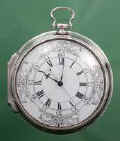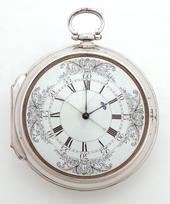Artefacts
The Cook voyages collected a large number
of artefacts from the Pacific. Two will have to represent them here though
others are pictured on stamps.
The voyages left little behind in the Pacific. Some Cook medals have been
found from the second and third voyages while introductions of plants and animals and, less benignly
diseases, are known, or in some cases argued about. Six cannon
Cook dumped to save the Endeavour from the Great Barrier Reef together with an
anchor from the same incident have been
recovered from the reef. (More)
(More)
One cannon is the Cooktown museum.
Of the European artefacts with Cook there are some survivors. The outstanding one is Kendall's Watch (K1) a copy of the Harrison Watch H4. Kendall's watch was carried on the second and third voyages. Cook was at the forefront of navigation practice and in demonstrating that the watch was the solution to the longitude problem. It is extraordinary to consider that the voyage covered the extremes of the forefront of science and the observation of a much less developed world than that of Europe. What better contrast than of the clubs and the watch, each functional, reflecting disparate ends of man's ambition, yet each made to high aesthetic standards.
| Voyage | Watches |
| Cook's Second | K1 and three Arnold watches on Resolution |
| Cook's Third | K1
on Resolution
K3 on Discovery |
| First Fleet to Sydney | K1 on Sirius,
flagship of the fleet. K1 was still aboard Sirius when she was
wrecked at Norfolk Island, but was saved.
If you ever fancy a trip to Norfolk Island then a must see attraction is the Sirius wreck museum - situated within a few hundred meters of the wreck site, in the Kingston World Heritage site. |
| Bligh's Tahiti voyage | K2 on the Bounty - which
continued on the Bounty to Pitcairn Island.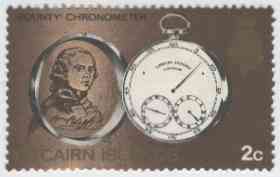 Pitcairn Island 1962 |
| Lieutenant Matthew Flinders to Australia and first continental circumnavigation. | K3 on HMS Investigator |
|
Picture |
Use on Stamps | |
|
|
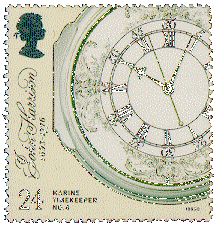 |
Britain 1993, one of a set of four depictions of H4, marking the tercentenary of Harrison's birth. This was not carried on a Cook voyage, rather Kendall's copy. |
|
|
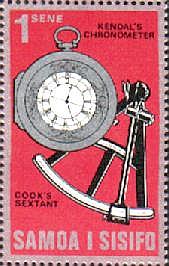 |
Samoa 1970 "Kendal's"
Chronometer
They were not called chronmeters until after Cook's day. |
|
|
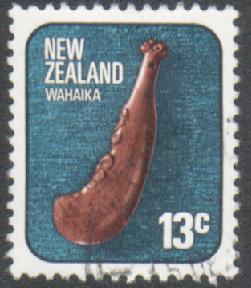 |
Wahaika New Zealand 1976
- a series based on artefacts in the New Zealand national museum (Now
called Te Papa). All used were believed to have Cook associations. On
the basis of the similarity to the Miller illustration this seems fairly
strong. Kaeppler* is more sceptical, but she was using an engraving from
the drawing rather than the drawing itself. A wahaika is a short club. |
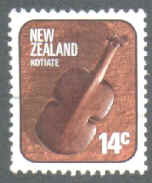 |
Kotiate. See above. A kotiate is also a short club. | |
* Kaeppler, Adrienne 1978, Artificial Curiosities, An Exposition of Native Manufactures Collected on the Three Pacific Voyages of James Cook, R.N. Bishop Museum Press, Honolulu.
